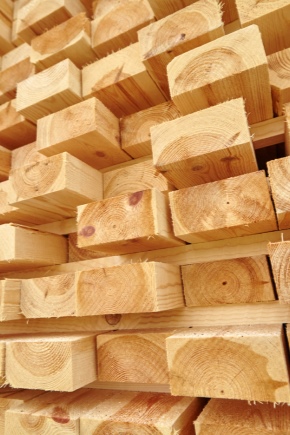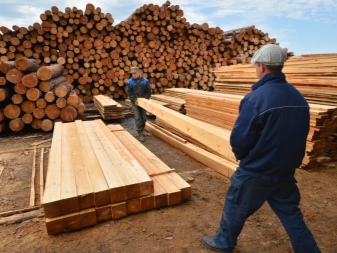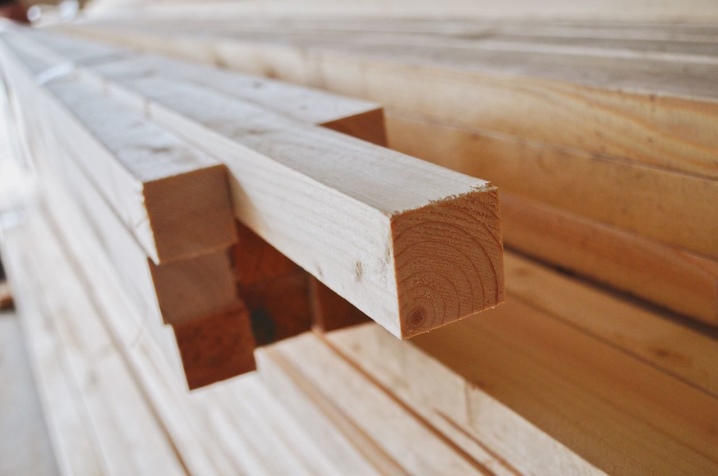All about timber

Learning as much information about timber as possible is important for any person who decides to build, repair or make something out of wood. It is necessary to take into account their types and assortment, to select the most suitable sawn timber for their purposes. And you should also figure out the options for the correct sawing of wood and choose the tools that are suitable for different jobs.

What it is?
In the professional environment, timber is defined as a piece of wood in which the original physical and chemical structure has been preserved; in everyday speech, lumber is also included in their composition. To obtain timber, use:
-
industrially felled trees;
-
wood felled by hand;
-
suitable species of self-fallen trees (rare);
-
whips and their parts.


In the process of timber production, various divisions are used in the transverse or longitudinal plane. First of all, we are talking about such processes:
-
sawing;
-
planing;
-
processing with cutters;
-
split;
-
peeling;
-
crushing (grinding).


It is worth noting that timber cannot be mixed with recycled whole products such as:
-
with glued timber;
-
with various types of plywood;
-
with chipboard, fiberboard, MDF.



The most important advantages of timber are, of course, their natural origin and ease of use in various cases. And also in favor of such a product is evidenced by its availability for consumers. Wooden structures serve for a long time and stably. When used correctly, this material is not too inferior to brick and concrete in terms of durability. The aesthetic color of everything that is made from timber is also very important.
But the tree has more than just advantages. Among the disadvantages are:
-
high flammability;
-
susceptibility to dampness and mold (removable, but valuable ecological properties are lost during processing);
-
the tendency to absorb moisture in large quantities;
-
high risk of shrinkage, warpage and other similar deviations that provoke deformation of building structures;
-
the difficulty of choosing a suitable species and category of timber.


Views
The name of timber in the classifier and other documents depends on the possibilities of their further use:
-
the trunk after the removal of roots and branches is usually called a tree whip;
-
the process of dividing the trunk into fragments is called "bucking", and these fragments themselves are called ridges;
-
depending on the cross-section of the ridge, it is additionally divided into a toolbox, a log and a pole (their sizes, respectively: 80-110, from 120 and more, 30-70 mm).
Rough timber is the same sawn, peeled and cut into pieces a tree. It is also accepted to call them round timber, round timber or round timber. Such products are in demand by match factories, pulp and paper mills, and plywood manufacturers.
It is also used ready-made as supports for secondary buildings, towers, power lines, and so on.


Processed timber is subdivided into:
-
lumber;
-
chipped products;
-
wood veneer;
-
some other products.
Sawn timber is produced with further longitudinal division of logs. They are additionally divided into general and special categories.The first category includes, for example, lumber used for the construction of wooden structures (fences, private houses), as well as for the manufacture of finished building blocks. The second group includes something that can withstand the highest loads and severe tests (for example, blanks for musical instruments, parts of a carriage and aircraft).



By the type of cross-section, lumber is divided into the following products:
-
timber;
-
board;
-
lagging;
-
sleeper;
-
bar.


1st grade
The assortment issue is closely related to the quality characteristics of the finished product. Important: even if the timber is marked with a certain varietal group, there may be separate inclusions (up to 10%) in the batch of both more and less quality products. Nobody examines them "under a microscope" when shipping each timber or board. Therefore, personal incoming control of incoming goods is so important.
Before proceeding to a further description of the varieties, it should be indicated that all products are divided into business and wood categories. They are used respectively for construction and subsequent processing. All this information is very important for a deeper understanding of what each variety is, what are their main characteristics.
Prime wood is a solid and widespread commodity. It may contain only a limited number of knots and other defects.
The manifestation of mold and other signs of biological damage, as well as foreign inclusions, is not allowed.


2nd grade
This includes products containing minor deviations from the standards of the 1st grade, which do not negatively affect the visual characteristics of the surface. There cannot be a single deep crack, not a single rotten knot. Tobacco bitches are of course also banned. But loose knots are acceptable. Such material is used mainly on shields.
In addition, it can make a good crate.


Grade 3
This is already considered to be of poor quality. However, the low cost still determines the steady demand for it. This material is commonly used in the packaging industry. Important: despite the bad reputation, this includes products that meet the requirements of the standards. Large intergrown knots and cracks extending to the full depth and affecting the butt must not be allowed.
Anything else is allowed.


Grade 4
It is the lowest of the officially allowed categories. There can be any imperfections and deviations. It is allowed to include even trimmings from any higher quality timber here. They make from such a tree:
-
pallets;
-
handles for auxiliary construction tools;
-
temporary forests;
-
formwork;
-
secondary sheds.


Materials (edit)
But the classification by varieties is incomplete - it is still necessary to figure out what is the difference between conifers and deciduous ones, as well as which ones are better. Softwoods usually have straight trunks and are of decent quality. It is relatively easy to handle. However, such “gifts of the forest” can be distinguished by their high strength. Even the supporting structures of one-story and two-story houses can be safely built from them.
Pine is very popular. She has a relatively low moisture absorption. Larch is more absorbent, but becomes harder on contact with water. In favor of hardwood lumber (aspen, linden, birch, poplar) they say:
-
high enough density;
-
grace of texture;
-
quite a long service life.

Requirements
The main provisions regarding round timber are enshrined in GOST 9463, which appeared in 2016. It is there that the key characteristics of the varieties given above are set. The standard explicitly prohibits the simultaneous presence of heart rot and sapwood in samples. External rot is allowed, but it must not reach the degree of rottenness.Round timber is produced and supplied unbarked, with the standard allowing for peeling of bark.
The cut bevel should be no more than the length allowance. Timber for subsequent processing into lumber should not have visors. The presence of knots with a height of more than 20 mm above the surface is prohibited. Loading timber for pulp production is incompatible with rot and tobacco knots. The wood must not be charred.
In the latter case, the requirement applies to any area of wood application.

Dimensions (edit)
The length and diameter must also be determined strictly according to the standard. Thus, general-purpose material made of pine and spruce can reach 6.5 meters in length with a thickness of up to 14 cm. Longer timber belongs to the so-called Black Sea export sorting - they can reach 8 m in length. Northern sorting products can reach 7 m. For aviation products, a limit is set - no longer than 2.75 m.
The spread for other types of timber is as follows:
-
resonant, ship and pencil - from 3 to 6.5 m;
-
for riveting barrels - from 1 to 2.7 m;
-
for wide track sleepers - 2.75 and 5.5 m;
-
for narrow sleepers - 1.3; 1.5; 1.8 m and multiples.

Production technology
On modern production lines, the value of the timber and the suitable processing methods are determined at the entrance with the help of special control equipment and computer programs. The first tool that is used first in any modern enterprise is the debarker. A similar technique can cope with the product of fresh felling, and even with frozen wood (humidity is not standardized). Saw frames are used for sawing. The specific option for the correct sawing is chosen by experienced technologists, taking into account the priority:
-
rustic - on the floor;
-
tangential - for the sake of economy;
-
radial - to increase strength and aesthetic qualities.

Storage
Timber is often stored in an open area. For this, it is advisable to provide awnings that protect from the sun and precipitation. Protection from precipitation is the primary concern of industrialists, but is still often limited to only covering with plastic wrap. Create tight stacks for maximum capacity without using spacers. Sometimes pack stacks are used, but working with them requires the use of special equipment.
Coniferous materials are placed so that the difference between the lengths of individual logs is no more than 1 m. For hardwoods, the requirements are stricter: maximum 0.5 m. The stacks must be laid out immediately after the receipt of the timber. The weather-resistant timber can be kept in the felling area for up to 120 days. For unstable, a limit of 60 days is set.












The comment was sent successfully.